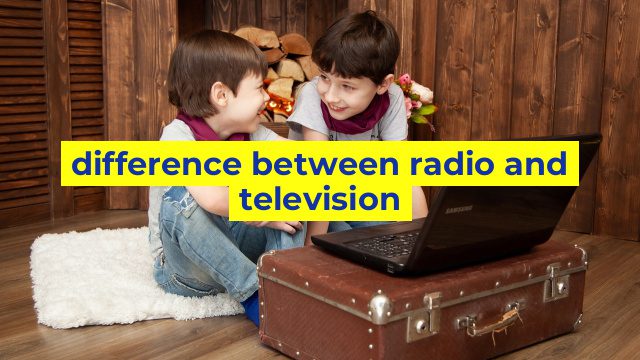The Difference Between Radio and Television
Radio and television are two popular channels of communication and entertainment. Both have their strengths and weaknesses and serve different purposes. Let’s look at some of the key differences between radio and television.
1. Mode of transmission
The primary difference between radio and television is the mode of transmission. Radio waves are used to broadcast sound signals, whereas television signals require both video and audio transmission. Radio signals can travel long distances, and their reception is not limited by geographical barriers. Television signals, on the other hand, require a clear line of sight and cannot travel long distances without the use of repeaters.
2. Audience engagement
Radio relies heavily on the audience’s imagination, as they only hear sound and no visuals. This kind of engagement requires a different level of listener involvement, such as focus, attention, and imagination. On the other hand, television offers a more immersive experience for the audience, especially with the addition of visual elements, making it easier for viewers to understand and follow the content.
3. Programming and Content
The programming on radio and television is vastly different from one another. Radio programs are typically more localized and cater to specific demographics or audiences. Radio programs range from music, sports, talk shows to news and current affairs. Television programming, on the other hand, requires more time and resources due to the visual aspect. Television programs can be anywhere from a movie, a reality show to a documentary or a live event.
4. Advertising
Radio and television play a vital role in the advertising industry. However, the way advertising is done on these two mediums is different. Radio commercials rely on sound and music to capture the attention of the listener. They are often repetitive and meant to stick in the listener’s memory. Television commercials, on the other hand, have the added advantage of visual graphics and animation, making them more appealing and memorable.
In conclusion, while radio and television share similarities in their purpose of communication and entertainment, they differ significantly in terms of transmission methods, audience engagement, programming, and advertising. Both mediums have their strengths and weaknesses and are used in different settings to achieve specific objectives. Understanding these differences can help you make informed decisions when deciding which medium to use in your next campaign.
Table difference between radio and television
| Features | Radio | Television |
|---|---|---|
| Mode of transmission | Through radio waves | Through airwaves and cables |
| Type of signals | Audio signals | Audio and video signals |
| Visual aspect | No visual component | Includes visual component |
| Engagement with audience | Primarily oral | Oral and visual |
| Usage | Used during commutes, for news and entertainment purposes, and as a background source of sound | Used for entertainment, educational, and informational purposes |


